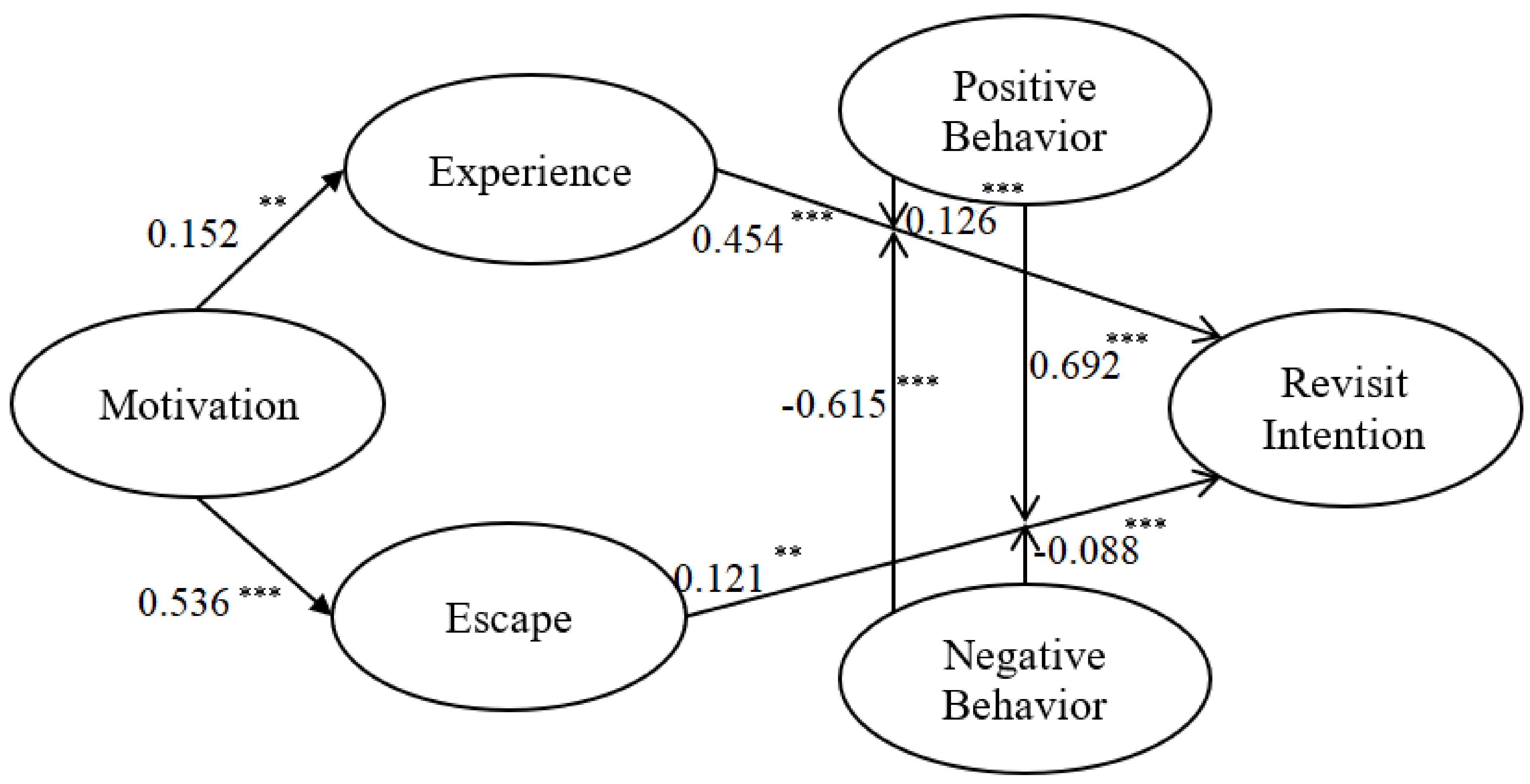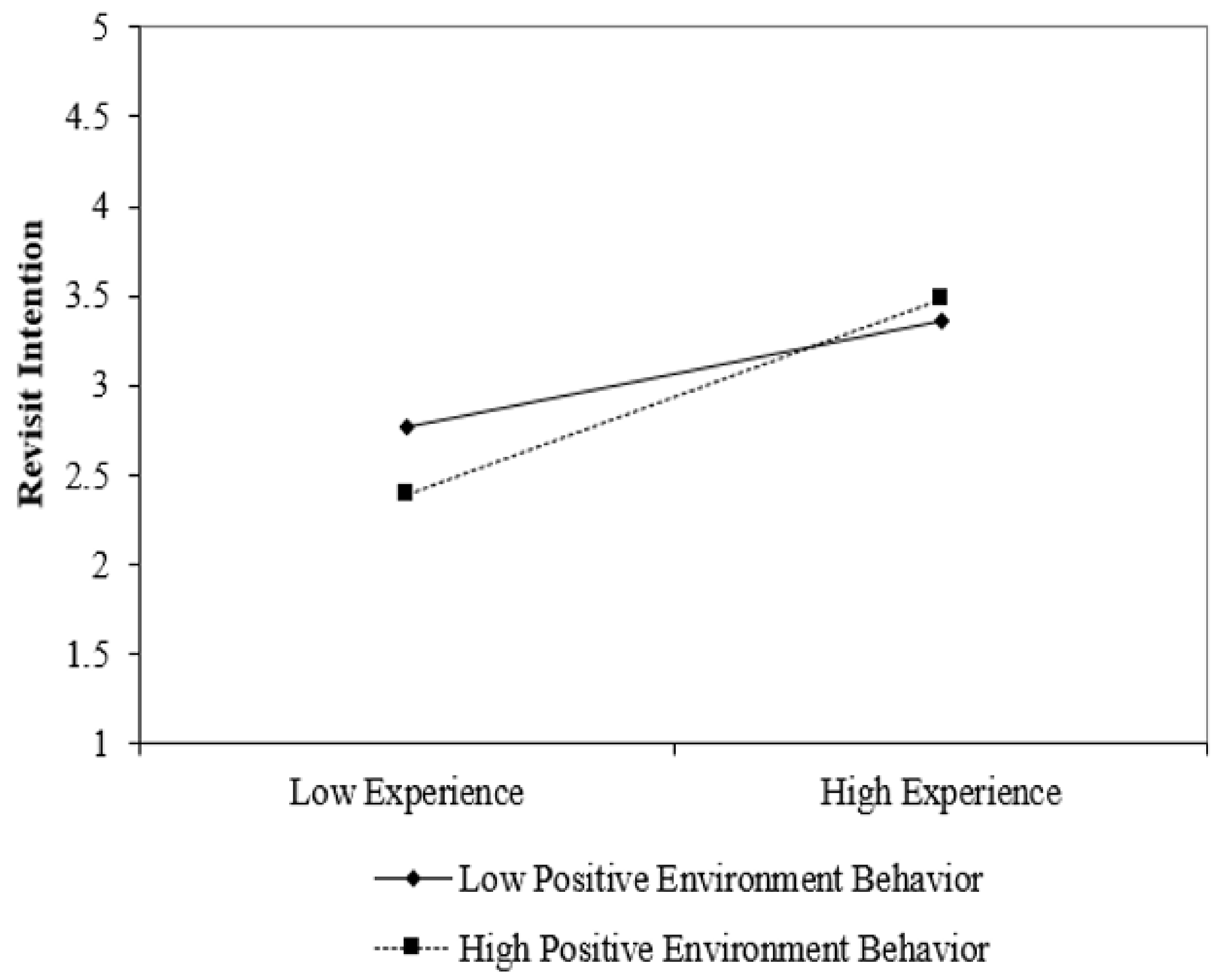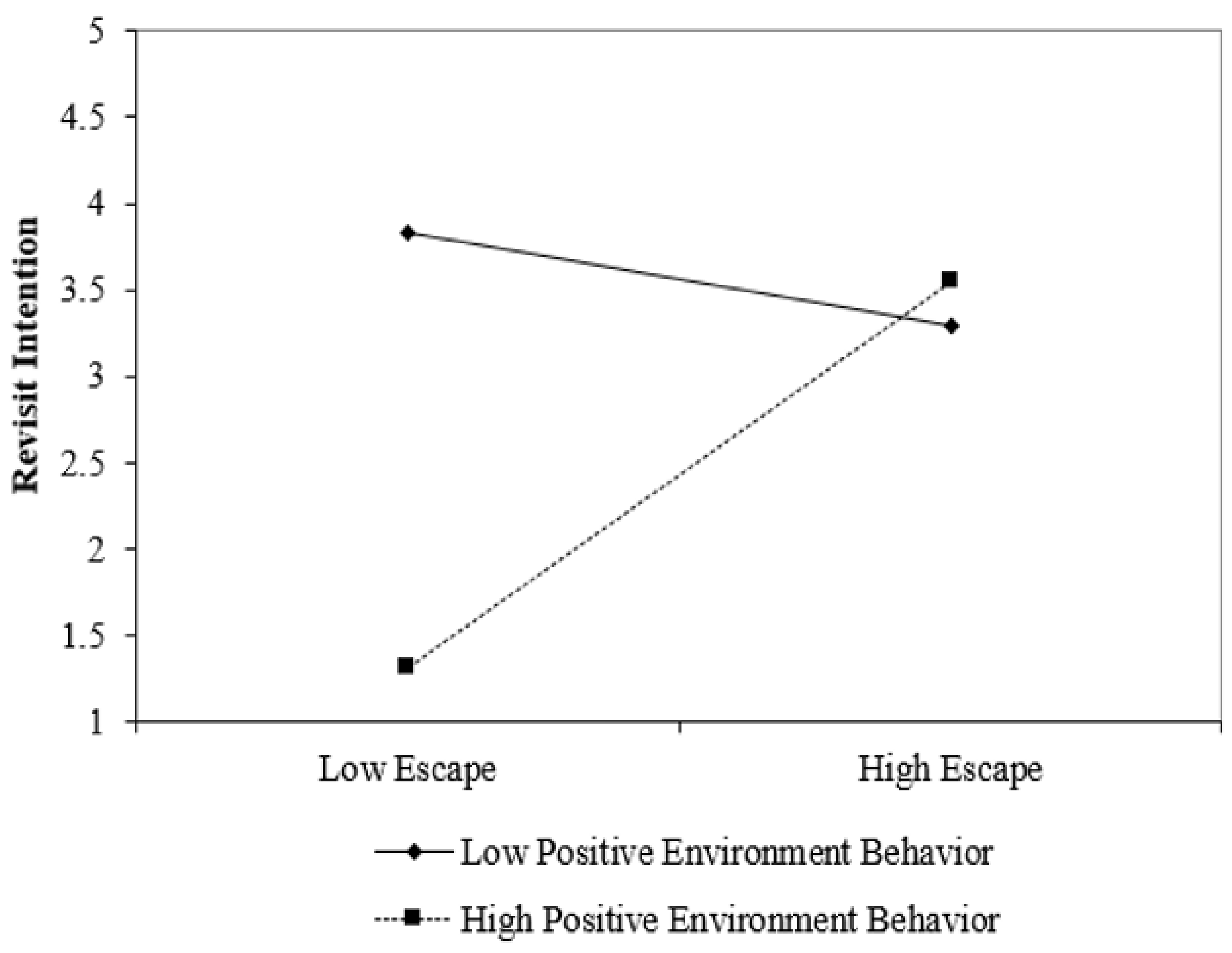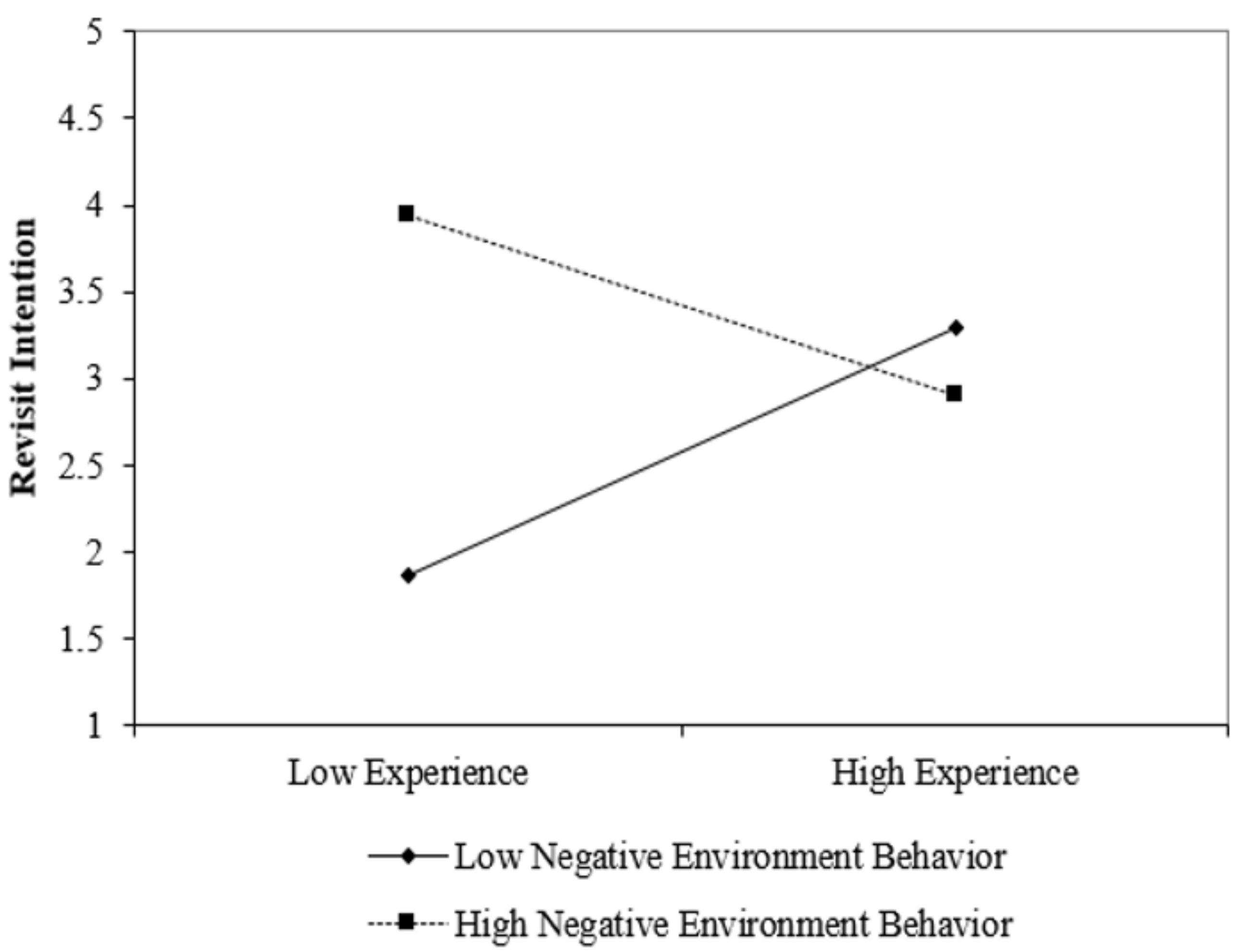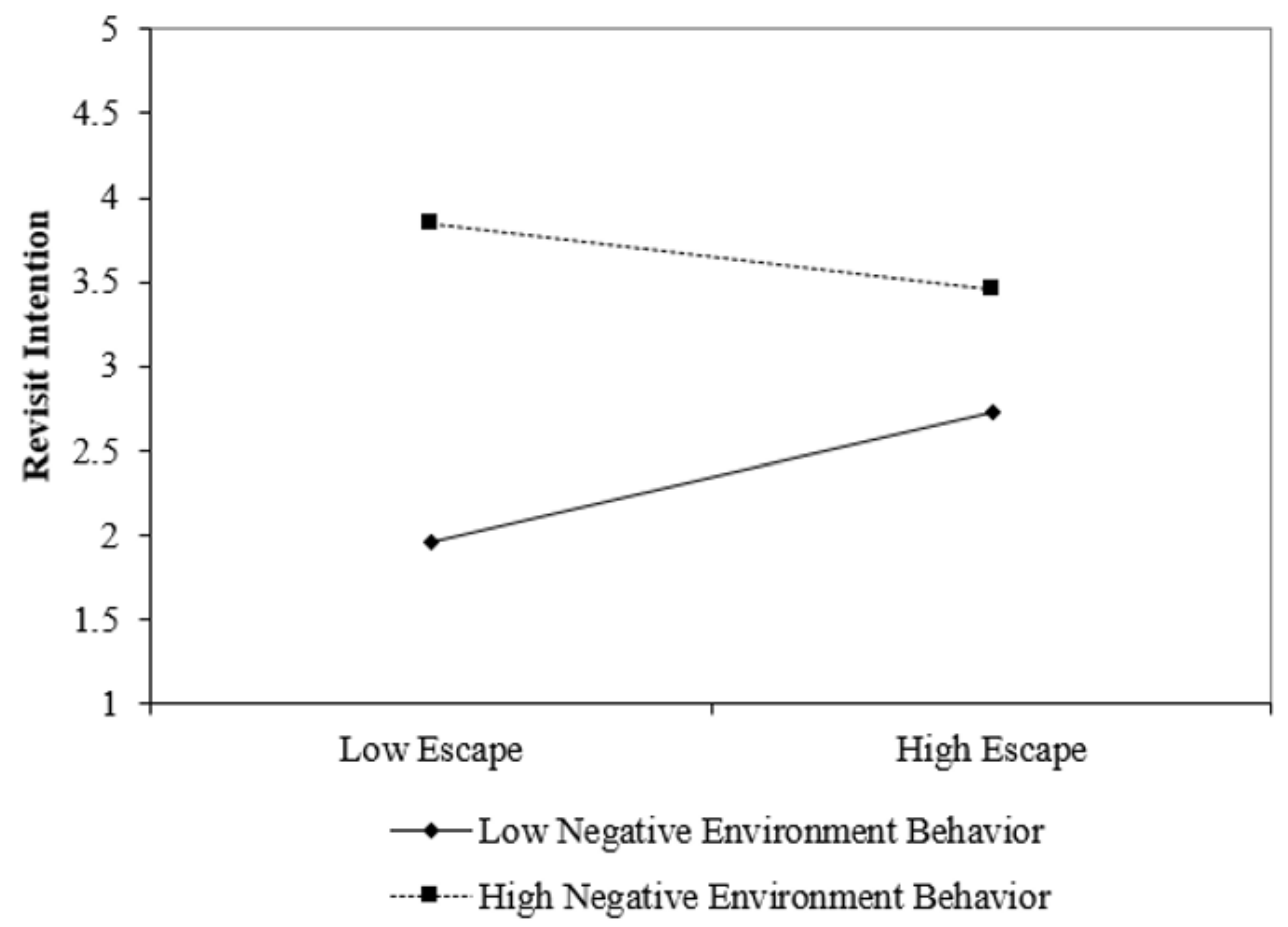1. Introduction
The growth of sustainable tourism in Taiwan over the last decade has been substantial [
1,
2]. This development has been mirrored in sustainability, particularly in tourists’ environmentally responsible behaviours (ERB) [
3,
4,
5,
6,
7,
8,
9]. In previous studies, it is commonly acknowledged that there have been few studies on the nature of exposed foreign tourists, their motivations, their sustainable experiences, and their travel intentions as well as how they can be effectively segmented. This becomes increasingly important if tourism managers or the tourism government aim to focus their activities on sustainability to maximize their potential benefits in sustainable tourism attractions and long-term relationships with international visitors and if operators or associated tourism agencies aim to focus on foreign tourists and implement appropriate promotional strategies or improvements in the international brand equity of the destination image [
10]. Moreover, the successful development of sustainable tourism not only increases the country’s visibility in attracting domestic and foreign tourists [
11,
12] and helps to maintain its original and natural resources [
13]; maintaining the sustainability concepts of tourism destination development also has noteworthy educational value for new generations [
14]. Therefore, travel in areas with rich biodiversity and high environmental consciousness has become a new relaxation and tourism activity and provides the best samples for sustainable tourism education [
15]. Tourism managers must pay more attention to tourists’ requirements to enhance sustainable activities by encouraging their travel motivations and intentions and by adjusting marketing strategies, operation processes, and resource allocations to fit customers’ sustainability requirements [
16]. However, until now, few researchers have specifically examined how sustainable motivations, experiences and environmental behaviours influence the intentions for sustainable tourism with a sample of foreign tourists in sustainable tourism or its subsequent performance.
According to the strategy of sustainable tourism development in 2020, Taiwan’s tourism market will follow the key trends of globalization of the growing Asian market and the globalization effect as well as localization, cultural relevance, and digital transformation. Taiwan contains abundant natural resources, with forests covering 59% and mountains covering 74% of the country to create the mountainous forested ecosystem [
17]. In addition to abundant natural environmental resources, the different climatic conditions generate diverse forests and species, which provide suitable conditions for sustainable tourism [
2,
15]. Despite the profound contributions of sustainable tourism as a new tourism activity and a great benefit for the development of Taiwan’s tourism industry, the question of how environmental behaviours influence foreign tourists’ travel intentions remains unanswered. Ref. [
18] proposed that people’s pro-environmental values change their environmental behaviours and generate utilitarian benefits (tourism). Therefore, without fully considering the context of tourists’ attitudes and environmental behaviours in their relationships within sustainability, further contemplation of these critical attributes in the travel intentions of sustainable tourism is needed.
Sustainable tourism is becoming a new trend in world travel. The concepts of environmental conservation knowledge and personal environmental attitudes are keys to promoting sustainability; thus, integrating environmental knowledge, environmental sensitivity, and place attachment into changes in tourists’ environmental behaviours has increasingly become a managerial priority [
4]. To promote sustainable tourism, researchers have argued that motivations and subjective well-being attitudes are critical attributes in identifying nature-based tourism intentions [
19]. Indeed, due to global climate change, customer awareness, and a changeable industrial environment, tourism organizations have catered to tourist needs and have sought a balance between environmental preservation and organizational performance [
20]. Specifically, tourism organizations must deliver environmental preservation knowledge and encourage sustainability intentions to customers, tourists, competitors, and suppliers to promote sustainability, especially since the Taiwanese government has implemented a number of developmental projects to promote sustainability [
1]. Earlier studies have noted that in the initial stages of encouraging sustainable tourism, tourists’ understanding of sustainability and whether it affects consumption is widely acknowledged as a foundational attribute of environmental behavioural changes [
21]. However, little research has been conducted in this area to examine how motivational encouragement and sequences influence foreign tourists’ sustainable tourism intentions through sustainable experiences and escape-seeking social capital accumulation. Accordingly, this study addresses this subject by considering these interrelationships and how they impact sustainable tourism intentions from the perspective of foreign tourists and the Taiwanese context. Tourism seeks to enhance tourists’ realistic findings and their search for authenticity and untouched places in the world; thus, psychological forces of experience and the need to escape are pull motives that are responsible for tourists’ choice of a destination [
22].
From the sustainable tourism perspective, experiences that connect tourists’ value orientations to sustainability increase their willingness to travel [
23], and escaping crowds of people provides an important motive for nature-based recreation visitors [
24]. However, focusing only on sustainable tourism attributes does not provide good explanations of tourists’ motivations or intentions towards travel decisions [
1]. Instead, the management of internal and external attributes of sustainable motivations and environmental behaviours to integrate and transform sustainability knowledge into tourists’ behavioural intentions is paramount in enhancing the understanding of tourists’ sustainable intentions [
25]. To integrate different concepts from previous studies, this study focuses on the effects of the relationship between sustainability motivations and tourists’ accumulated experiences. Furthermore, this study investigates how tourism experiences can be exploited and transformed to improve foreign tourists’ overall travel intentions. Although tourists’ sustainable tourism intentions may be influenced by pro-social and environmental attitudes [
26], the present study focuses on foreign tourists’ motivations and travel decision formulation processes, which are essential to understanding the future trends of the tourism industry. This study also adds new considerations for environmental behavioural benefits and impacts that reflect the current status of sustainable tourism implications in Taiwan.
2. Literature Review and Hypothesis Development
Past studies on the development of sustainable tourism through nature-based tourism have highlighted the motivations of visitors as significant indicators of sustainable practices, such as learning, attitudes, educational orientations, and environmental behaviours [
27]. Most previous research involving sustainability attitudes has asserted that tourists’ motivations influence the development of their sustainable tourism experience and affect their psychological identification with specific places [
19,
28]. Visitors are aware of their push and pull motivations and whether previous memories or experiences can motivate them [
29], especially when making travel plans and decisions. The deep experience of developmental stimulation often involves motivation as a prerequisite of emotional tension [
1], which influences the intention to visit or willingness to pay a premium for sustainability or ecotourism [
30]. If tourists have pleasurable memories of previous experiences, they may gradually develop the intention to repeat the experience and become familiar with the destination [
31]. This can result in repeated intentions for sustainable visitation and goodwill towards the sustainability of the destination [
19]. Based on this, this study proposes the following:
Hypothesis 1. Motivations have indirect and positive effects on revisit intentions through sustainable experiences.
In the current context, we also propose that motivations may influence tourists’ intentions to engage in sustainable tourism through the need to overcome negative moods and leave a stressful social environment, which is a function of the motivation towards sustainable tourism. Existing studies provide strong support for this presumption by demonstrating a positive relationship between tourists’ motivation, escape-seeking, and tourism intentions for environmentally responsible tourism [
1]. Specifically, the findings indicate that tourists escape mundane life by seeking to fulfill their psychological and biological needs through sustainable tourism [
15]. Nostalgia triggers individuals’ memories that are embedded in the ecological environment, thereby allowing tourists to escape their everyday lives [
32]. This concept of escape-seeking that drives sustainable travel allows the present study to adopt a widely accepted model of tourism motivation as its theoretical basis in addition to the foundational attributes of a typology of factors related to sustainability. Ref. [
28] stated that motivations are an important element of collective actions for sustainable tourism that may help individuals escape daily life, potentially changing their environmentally responsible behaviours and educating and enlightening them. This idea is integrated with the abovementioned concepts that address tourists’ social psychological need for escape-seeking. This phenomenon implies that once individuals’ motivations are encouraged and change their cognitive processes, individuals will develop certain attitudes towards sustainability. Individuals’ motivations are psychologically internalized in terms of feeling release from a stressful social environment. This feeling is affected by cognition as well as the emotional desire to escape daily life. In turn, these motivations connect to an individual’s intentions to revisit sustainable tourism.
Hypothesis 2. Motivations have indirect and positive effects on revisit intentions through escape-seeking.
Environmental behaviours refer to actual actions towards natural environmental concerns or accomplishments by individuals or groups [
4]. The measurement of environmental behaviours involves the degree of concern regarding the physical environment and reflects how individuals take action or responsibility for environmental preservation [
33]. Individuals with positive environmental attitudes who take action for environmental protection satisfy their ethical goals and need for personal uniqueness [
34,
35]. These sustainable behaviours make their travel actions and experiences more beneficial for self-improvement [
36]. Many studies have suggested that environmentally responsible behaviours are an important activator between sustainable experiences and travel intentions. For example, [
37] assert that tourists’ perceptions of ecotourism experiences influence their moral interest in the environment. Ref. [
18] also state that acting green is related to individuals’ self-concept, moral norms, and positive feelings and that it maximizes personal utility through sustainability actions. Thus, this study argues that when foreign tourists have positive environmental behaviours and take action for long-term environmental development planning and environmental sustainability, they will receive the enjoyable benefits of escape-seeking and the experiences that sustainable tourism provides because this action makes people feel good. Thus, individuals will be more willing to act and develop environmentally protective behaviours or think about environmental issues when making travel decisions, leading them to display active and responsible behaviours with regard to their revisit intentions.
Hypothesis 3a. Positive environmental behaviours have positive and moderating effects on the relationship between sustainable experiences and revisit intentions.
Hypothesis 3b. Positive environmental behaviours have positive and moderating effects on the relationship between escape and revisit intentions.
Negative environmental behaviours refer to tourists’ actions that do not contribute to environmental protection, do not acknowledge tourism services as public goods, and do not consider personal benefits as well as the actions of tourists who are less concerned about resource conservation [
30]. Personal values and benefits influence tourists’ intentions to take action towards pro-environmental tourism consumption [
16,
21,
38], although limited empirical evidence exists regarding this phenomenon. Ref. [
30] proposed that higher-order individual values lead to the formation of money-oriented evaluations of sustainability and the prioritization of lower-order needs in environmental protection. In other words, lower-order needs in environmentally protective behaviours reduce the benefits of sustainable experiences and escape-seeking and influence tourists’ intentions towards sustainable tourism. Ref. [
39] asserted that the overdevelopment of economic and irresponsible behaviours for environmental resource consumption is a key element in destination images that influence foreign tourists’ visits.
Hypothesis 4a. Negative environmental behaviours have negative and moderating effects on the relationship between sustainable experiences and revisit intentions.
Hypothesis 4b. Negative environmental behaviours have negative and moderating effects on the relationship between escape and revisit intentions.
4. Results
Table 6 shows the descriptive statistics of all the variables. The correlations among some variables were represented by high values, indicating sufficient variation and an advanced examination process to identify the multicollinearity effects. For example, the correlation of negative environmental behaviours of destruction and conservation was 0.628. The values of VIF indicate that multicollinearity is not a serious concern in our observation variables since all the factors were below 2.05 [
10].
The hypothesized model has a good fit to the data, as represented by the following statistics: χ
2 (114, N = 483) = 238.116,
p < 0.001, RMSEA = 0.048, CFI = 0.971, AGFI = 0.926, GFI = 0.945, and IFI = 0.971. The standardized coefficients are shown in
Figure 1.
Hypothesis 1 asserted that motivations have indirect and positive effects on revisit intentions through sustainable experiences. As shown in
Figure 1, motivations were positively related to experiences (
β = 0.152,
p < 0.01), and experiences were positively related to revisit intentions (
β = 0.454,
p < 0.001). Furthermore, the indirect effect of motivations on revisit intentions was
β = 0.069,
p < 0.05, which supports Hypothesis 1. The results also support Hypothesis 2. The direct effect of motivations was positively related to escape (
β = 0.536,
p < 0.001) and escape was positively related to revisit intentions (
β = 0.121,
p < 0.01), which suggested that motivations indirectly affected revisit intentions through escape (
β = 0.065,
p < 0.05).
To further assess the overall model fit of the mediating effects of Hypothesis 1 and Hypothesis 2, alternative overall models were tested that added a direct path from motivations to revisit intentions (alternative model). As shown in
Table 7, although the alternative model also shows good model fit (χ
2(113) = 315.348; CFI = 0.953; AGFI = 0.906; GFI = 0.930; IFI = 0.953; RMSEA = 0.061), the original model has better model fit than the alternative model. Therefore, since there was no noticeable improvement in the alternative model, the original hypothesized mediation model was maintained as the superior model because it was the most parsimonious.
The results of
Figure 1 support Hypothesis 3a and indicate that the interaction between positive environmental behaviours and sustainable experiences was significantly related to revisit intentions (
β = 0.126,
p < 0.001).
Figure 2 and the slope tests show that the relationship between sustainable experiences and revisit intentions was stronger when positive environmental behaviours were high rather than low.
In support of Hypothesis 3b, the coefficient for the interaction effects among positive environmental behaviours and escape on revisit intentions was significant (
β = 0.692,
p < 0.001). In the comparison results, shown in
Figure 3, the slope difference for the interaction relationship when foreign tourists’ positive environmental behaviours and escape were high in revisit intentions (rather than low) was significant. Thus, the findings support Hypothesis 3b.
In addition, the results of
Figure 1 support Hypothesis 4a and indicate that the interaction between negative environmental behaviours and sustainable experiences was significantly related to revisit intentions (
β = −0.615,
p < 0.001).
Figure 4 and the slope tests show that the relationship between sustainable experiences and revisit intentions was weaker when negative environmental behaviours were low rather than high.
In support of Hypothesis 4b, the coefficient for the interaction effects among negative environmental behaviours and escape on revisit intentions was significant (
β = −0.088,
p < 0.001). In the comparison results shown in
Figure 5, the slope difference for the interactive relationship when foreign tourists’ negative environmental behaviours and escape were low in revisit intentions versus when foreign tourists’ negative environmental behaviours and escape were high in revisit intentions was significant. Thus, the findings support Hypothesis 4b.
5. Discussion and Conclusions
Sustainable concepts and behavioural development are core issues for future tourism and hospitality activity. This development will allow visitors’ awareness of environmental sustainability to create a natural atmosphere that meets the needs of consumers [
25,
37]. Prior tourism and hospitality studies have identified numerous challenges faced by sustainable tourism when confronted with high economic developmental conflicts and environmental conservation [
51]. Specifically, in studies on sustainable tourism development, Ref. [
4] found that tourists’ ERBs were the top challenges faced by sustainable island tourism development. Consequently, the current research identified the critical features of sustainable tourism by focusing on how foreign tourists’ motivation, escape-seeking, and experience of developmental processing impact their revisit intentions when they have different environmental behaviours and awareness. First, this study extended the study by [
19] by asserting that tourists’ motivations are effective predictors of their subjective well-being in nature-based tourism and identified multiple mediating results that indicated that escape and experience are critical mediating roles that link foreign tourists’ motivations and revisit intentions. The results show that tourists’ values and sustainability needs are the foundational basis of environmental sustainability, and they reflect the concept that “tourists’ satisfaction and needs are key for sustainable tourism development” [
1]. Therefore, any sustainable knowledge transfer or creative experience accumulation activities in a tourism organization or governmental department must focus on tourists’ motivations and inspiration to enhance their sustainable lifestyle and must focus on the diffusion of the responsibility for the negative consequences of tourism [
21].
Second, the results show that visitors’ pro-environmental behaviours trigger the enhancement of tourists’ sustainable experiences since they connect the personal benefits of acting green and targeting individual economic interests, which can lead to better environmentally sustainable behaviours and revisit intentions in the future [
18]. This finding follows [
19] argument that environmental behaviours contribute to the development of nature-based tourism by playing important roles in influencing individuals’ travel decisions. Importantly, this study reveals that negative environmental behaviours not only impact the destination image [
39] but also result in varying intentions of visiting among foreign tourists. To control the potential impacts on or benefits of sustainable tourism intentions, positive and negative environmental behaviours are critical because they are associated with levels of ecological knowledge and conservation sensitivity, which influence tourists’ affection towards specific destinations [
4]. Tourism and hospitality organizations might create educational environments to inspire tourists’ motivations that can support unforgettable experiences and escape-seeking and improve tourists’ respect and affection for sustainability. This can encourage organizations to develop new services or products in response to customers’ need for sustainability. As a result, the contributions of environmental sustainability, tourist satisfaction, and organizational performance can be achieved.
5.1. Theoretical Contributions
The present study fills the gaps in the previous literature on sustainable tourism and highlights several theoretical contributions. First, in studies of sustainable tourism for foreign tourists’ motivations and revisit intentions in the Taiwanese context, previous researchers have suggested that tourists’ motivation is an important contextual factor that can influence travel intentions and decisions [
1,
52]. However, sustainability issues in the Taiwanese context have not been well documented, especially with respect to the consideration of foreign tourists’ perspectives. Following the increased attention to environmental conservation in Taiwan’s tourism and hospitality markets to attract foreign tourists, the exploration of foreign tourists’ viewpoints on sustainable tourism not only contributes to the literature but also provides meaningful implications for marketing strategies and the allocation of limited tourism resources [
10]. This study aims to extend the literature by identifying foreign tourists’ motivations and experiences in relation to sustainable tourism intentions. The findings may provide insight to tourism and hospitality studies into how this empirical evidence could be useful for the intangible attributes of sustainable experiences.
Second, at a broad level, previous sustainability studies have strongly suggested that environmental behaviours and attitudes play key roles in determining payment premiums and revisit intentions for sustainable tourism [
10,
30]. We believe that the present research is the first to provide a cohesive explanation and empirical evidence for the relationship between positive and negative environmental behaviours and revisit intentions. In addition, this research illustrates how specific environmental behaviours influence the sustainable tourism decision-making process. Furthermore, this work explains how this influence is exerted on sustainable intentions through the encouragement of positive environmental behaviours and their impacts on negative environmental behaviours. In fact, motivations, experiences, and environmental behaviours constitute three instrumental determinants of tourists’ travel intentions. They belong to a different research stream that, remarkably, has not previously been systematically integrated as a means to explain foreign tourists’ sustainability behaviours and tourism intentions.
Third, this study uses the well-developed behavioural theory of different environmental attitudes for a sustainability–intention model in a mediation-moderation setting. This is especially true with the introduction of the second-order factor analysis of negative environmental behaviour with regard to attitudes, destruction, conservation, and eco-friendliness. Past researchers [
47] have used this perspective on behavioural analysis to predict consumers’ eco-friendly intentions, but few studies have examined foreign tourists’ behaviours and perspectives based on these ideas or based on advanced mediation-moderation analysis.
Fourth, by extending tourists’ motivations and perspectives and incorporating the sustainable experience developmental process into sustainable intentions [
21], this study shows that foreign tourists’ revisit intentions for sustainable tourism can be encouraged depending on their motivations, which are inspired by the experiences and escape mechanisms that sustainable tourism may provide. This paper also extends the tourism and hospitality literature with empirical tests of theories of “sustained value creation” for environments [
53]. Future tourism managers should be more careful about ethical objectives from the perspective of tourists, especially when sustainability is connected with destination resource conservation and protection [
54]. However, most sustainable tourism studies in Taiwan only focus on environmentally responsible behaviours and on the effects of community participation [
15] and do not consider how to develop and encourage foreign tourists’ motivations. Studies should be conducted with a more comprehensive environmental behavioural analysis that considers the complex and dynamic tourism environment to meet customers’ requirements and changing needs for sustainability [
10].
5.2. Managerial Implications
Several implications are highlighted for sustainable tourism management. First, to satisfy the sustainability requirements of customers’ needs, tourism organizations must take responsibility for the environment, community, and ecosystem and should develop “‘new tourism” to meet customers’ changing demands and to survive in the increasingly complex and dynamic environment [
53]. In the highly competitive tourism environment of Taiwan, because of limited resource support from the government and the regulatory constraints of environmental protection laws, managers are required to address customers’ sustainability needs and to create sustainable tourism environments to attract tourists and maintain organizational growth and survival [
55]. Ref. [
34] proposed that managers need to consider the demand-side approach to increase customers’ knowledge and awareness of environmentally friendly ways to decrease environmentally harmful behaviours.
Additionally, this study emphasizes the benefits of tourists’ sustainable experiences and escape-seeking when engaging in sustainable tourism. This concept is similar to the “effective supply-side approach”, which refers to changing the services provided by changing tourists’ travel behaviours with regard to environmental consequences and requiring firms to satisfy tourists’ expectations for minimum standards of service provision [
34]. In other words, managers must identify the necessity of sustainable experiences for tourists because tourism organizations can benefit from increased organizational revenue when tourists participate in sustainable activities [
56]. In addition, managers can contribute to the objectives of sustainable development as citizens of the earth [
57]. Furthermore, managers need to identify the potential influences of negative environmental behaviours, consider the importance of sustainable experiences and escape-seeking, and increase tourists’ awareness of global environmental changes. Consequently, managers must enhance their responses to tourists’ changes in requirements and improve tourists’ intentions to revisit.
Finally, with respect to the marketing strategy formulation process, it is important to understand customers’ needs and future tourism trends before implementing resource allocation and marketing strategies. Given the finding that encouraging tourists’ sustainable motivation can increase their overall travel intentions through experiences and escape-seeking, managers who aim to encourage tourists’ sustainable motivations should consider establishing an education system to develop tourists’ environmental knowledge, environmental sensitivity, and place attachment to attract them and inspire their sustainable tourism intentions [
4].
5.3. Limitations and Future Research Directions
Despite the theoretical and empirical contributions to sustainable tourism development, this study also has several limitations and makes suggestions for future work on sustainable tourism. First, this study sampled foreign tourists and considered their sustainable experiences and perspectives to increase the representativeness and to reflect the real tourism market and requirements. It is possible that the study of real sustainable tourism phenomena should consider foreign tourists’ opinions outside of a particular location and should include the opinions and perspectives of insiders, such as stakeholders [
58], domestic tourists [
1,
46], or residents [
59]. In addition, the creation and integration of value-added sustainable products or services for tourists should be considered. As [
60] suggested recently with regard to developing customers’ sustainable intentions, hospitality and tourism firms’ supply chain management (SCM) should empower customers to become codesigners, coproducers, and comarketers of sustainability services and should increase customers’ consumption intentions to achieve sustainability. Hence, future sustainable tourism research should extend the findings of this study and examine the generalizability of the present findings by sampling different participants or sustainability service providers across a range of SCM. This should include the perceptions of stakeholders, domestic tourists or residents, which could increase opportunities for sustainable products and services and deliver them to tourists to make operations more sustainable.
In addition, although the theoretical model that was used in this study included the system analysis process and integrated diverse methods of sustainable tourism that assessed new trends in sustainability research, the key variables were measured within a short time frame. A longitudinal survey could observe changes in sustainability concepts, or a cross-sectional design could be used. This could include experienced and high-potential tourism organization managers or owners since they may be more willing to take on challenging jobs or may use alternative methods of problem-solving, which could make profound contributions to organizational and sustainable tourism development [
52]. Therefore, a useful next step for future research would be to apply a cross-sectional design to sustainability development that responds to environmental changes and contributes to overall organizational performance.
Finally, environmental behaviours are depicted in this study as external attributes that can influence sustainable experiences and improve escape-seeking. However, there are other external attributes that can have negative or positive moderating effects in different contexts. For example, regarding environmental behaviours, it has been suggested that environmental knowledge, environmental sensitivity, and place attachment should be considered together when examining the effects of the environmentally responsible behaviours of tourists [
4,
55]. Thus, exploring the various moderating roles of other external attributes of environmental conservation concepts would be a valuable direction and would have more implications for future sustainable tourism research.
